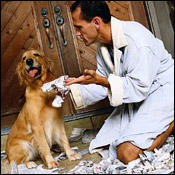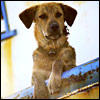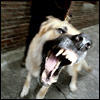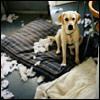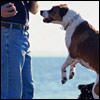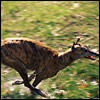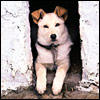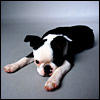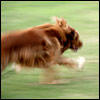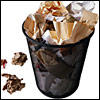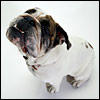
Cows are members of the sub-family ‘Bovinae’ of the family ‘Bovidae’. This family also includes Gazelles, Buffalo, Bison, Antelopes, Sheep and Goats.
Cows are raised for many reasons
including: milk, cheese, other dairy products, also for meat such as
beef and veal and materials such as leather hide. In older times they
were used as work animals to pull carts and to plow fields.
In some countries such as India, cows
were classed as sacred animals and were used in religious ceremonies and
treated with much respect.
Today, cows are domesticated ungulates
(hoofed animals with two toes on each hoof) that we see very often
chewing the grass in farmers fields as we walk or drive through the
countryside.
There is an estimated 1.3 billion head
of cattle and 920 breeds of cow in the world today. Cows are referred
to as the ‘fosters mothers to the human race’ because they produce most
of the milk that people drink.
The mature female of the species is called a ‘cow’.The mature male of the species is called a ‘bull’.
A group of cows is called a ‘herd’.
A young female cow is called a ‘heifer’.
A baby cow is called a ‘calf’.
A cow spends up to 6 hours a day
eating. Cows spend over 8 hours a day chewing thier cud which is
regurigated, partially digested food. Cows each drink equivalent to a
bath tub full of water a day.
Cows occupy a unique role in human
history. Cows have been considered one of the oldest forms of wealth.
Cows have always been of interest to man because of their amazing
ability to be able to provide meat and dairy products, have been strong
animals to work with and also reproduce themselves while eating nothing
but grass. Amazing!
Cow Reproduction

The average cow is 2 years old when she has her first
calf. Calves are fed from the cow until they are between 8 and 9 weeks
old. It is essential for a calf to be fed their mothers milk from the
start as it contains antibodies that protect the new calf from diseases.
Two months before giving birth, a dairy cow takes a rest from giving
milk in order to grow her calf.
During this period the cow is known as
a Dry Cow. When a dairy cow gives birth, this process is called a
freshening. All calves are born with horn nubs. It is common for a vet
to remove these nowadays.
A young female calf is called a heifer, she is called this until she has her first calf. A young male is called a bull calf.
Did you know that cows never forget
their calves. It is quite common to see them licking their grown calves
just as they did when they were young.
How to determine the age of a cow

The age of a cow is determined by examination of the
teeth and less perfectly by the horns. The temporary teeth are in part
erupted at birth and all the incisors are erupted within twenty days.
The first, second and third pairs of temporary molars are erupted in
thirty days. The teeth have grown large enough to touch each other by
the sixth month. They gradually wear and fall in eighteen months. The
fourth permanent molars are through at around the fourth month.
The fifth at the fifteenth month and the sixth at two
years. The temporary teeth begin to fall at twenty-one months and are
entirely replaced by the thirty-ninth to the forty-fifth month.
Interesting Cow Facts
-
The oldest cow ever recorded was a Dremon Cow named ‘Big Bertha’ who died 3 months just before her 49th birthday on New Years Eve, 1993.
-
‘Big Bertha’ also holds the record for lifetime breeding as she produced 39 calves.
-
The heaviest live birth of a calf is 225 lbs for a British Friesian cow in 1961.
-
Dairy cows can produce 125 pounds of saliva a day.
-
Dairy cows can produce up to 200 pounds of flatus (trumps and burps) a day!
-
Cows often have their ears pierced-with I.D. tags.
-
People first domesticated cows about 5000 years ago.
-
The Holstein cow produces the most milk of all breeds.
-
Cows can live to the age of 25 years old if people would let them.
-
A cow stands up and sits down about 14 times a day.
-
In an average herd, there is 1 bull to every 30 cows.
-
Cows can detect odours up to five miles away.
-
The age of a cow can be determined by counting the rings on its horns.
-
Cows can see colour.
-
There are approximately 350 ‘squirts’ in a gallon of milk.
-
Cows can pick and lick their noses with their tongues.
-
Cows drink 25 – 50 gallons of water each day. That is nearly a bathtub full.
-
When the Pilgrims went to America, they took cows with them.
